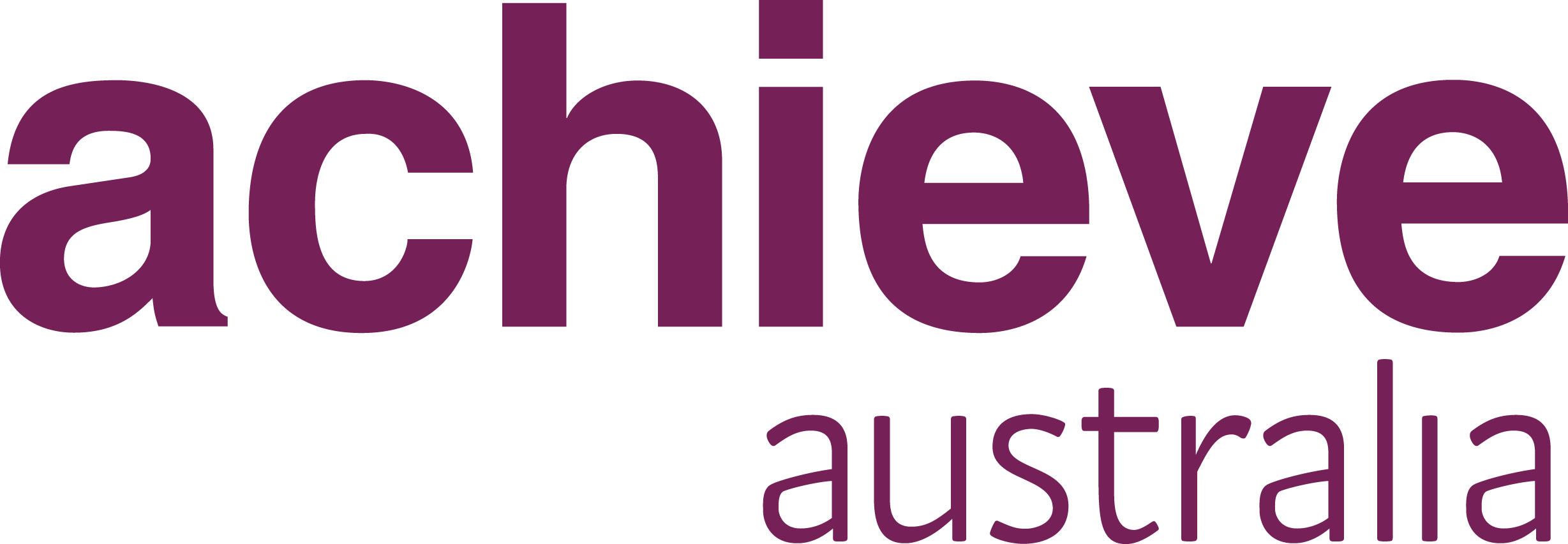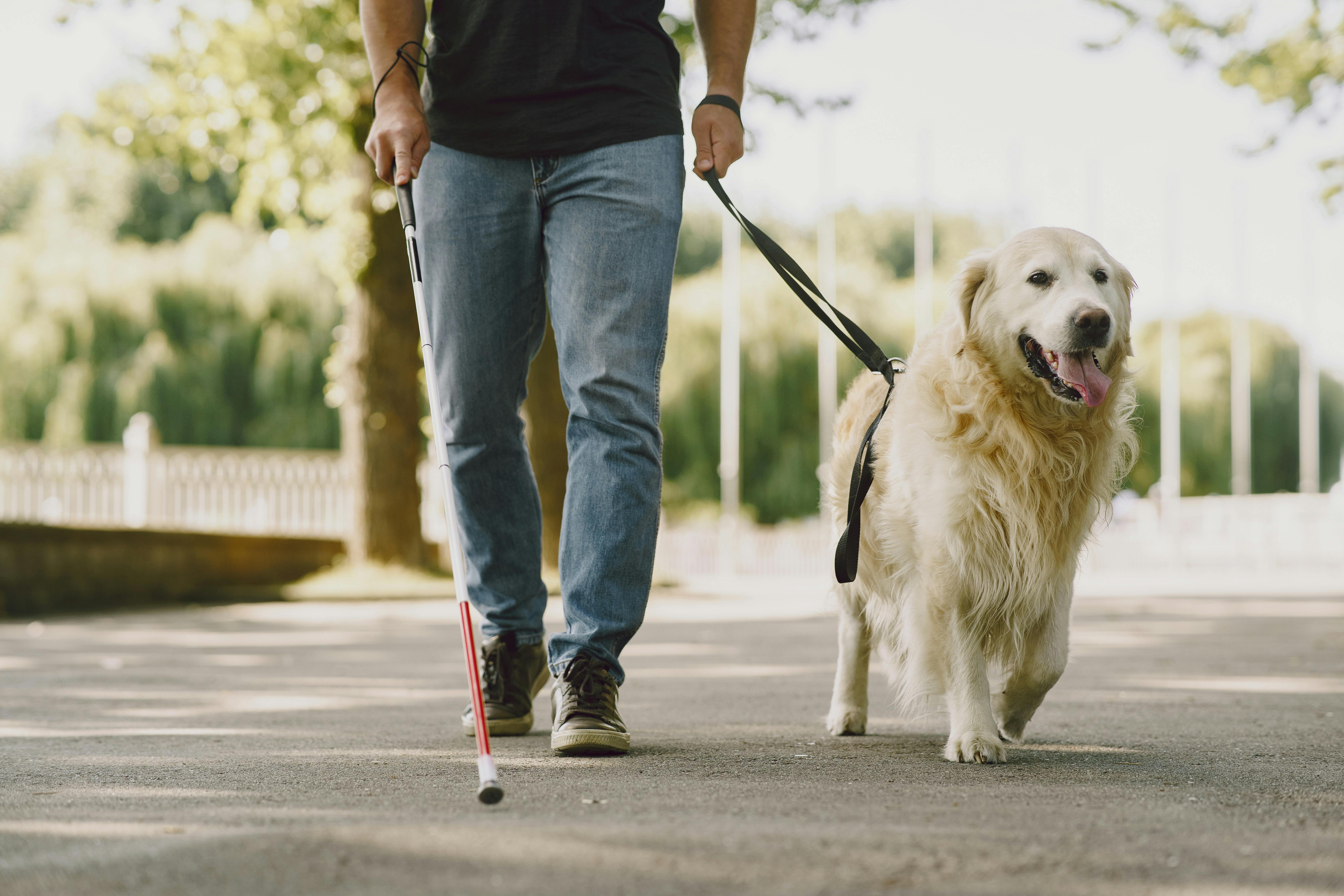Nick Gleeson is an accessibility advocate, professional speaker and writer who loves sports and adventure. He has represented Australia in the Paralympics, climbed Mount Kilimanjaro and to Mount Everest base camp and trekked Australia’s Simpson Desert.
Other proud achievements include carrying the Queen’s Baton at the 2018 Commonwealth Games held on the Gold Coast and the Olympic torch through Bankstown for the 2000 Sydney Olympic Games.
Nick shares his many adventures in his memoir, The Many Ways of Seeing and how an accident led to blindness at age 7.
The fuel for Nick’s many accomplishments was the endless encouragement of his parents when he was a young person and later from his wife Heather, children Peter and Belinda and friends across his varied interests and work.
Nick is a member Achieve Australia’s (Achieve) Quality Champions team who visit with people receiving services from us to gather feedback about what is working well and where we can improve.
As those who hear Nick speak or read his book know, he has taken on many personal quests during his life. However, along with the grand adventures have been the more every day challenges of educating well-meaning people on when - and how - to assist someone who is vision impaired or blind and when not to.
This week, Achieve colleagues were fortunate to hear Nick provide his tips, delivered with some wonderfully entertaining anecdotes.
We share the tips written by Nick below. Please share further with your family and friends. You can also read more about Nick’s fascinating life on his website https://www.nicholasgleeson.com.au/
Apply the AAA Principle
If you see a person with a cane or guide dog, observe before deciding to approach the person. If you do decide to go ahead, apply the AAA – Approach, Ask, and offer Assistance.
Approach
-
You observe a person and decide that they may need assistance.
-
Approach the person and speak at an appropriate volume (do not shout).
-
Avoid touching the person prior to speaking to them, as this may startle them.
-
Appropriate touch can be beneficial (after speaking) - make contact by lightly touching the person between wrist and elbow.
Ask
-
You may want to address the person using the following words, “hello, would you like any assistance or are you ok?”
-
If you know the person, approach them, say their name and yours as well, “hello Olivia, it’s Mark, would you like any assistance?”
-
If the person says, “no, I am fine”, accept their decision. If the person says, “thank you, that would be great”, then ask what assistance they need. It is best to say, “how best can I assist?”. Listen carefully to their reply as it is important to provide useful assistance.
Assist
-
The level of assistance will vary from person to person. It is important to listen carefully to the person and respond, if possible, to their request. Do not be afraid to say, “if I say or do anything that is unhelpful, please tell me”.
-
The more you get to know a person, you will learn their preferences and become increasingly confident and comfortable providing beneficial assistance.
-
For example, the person might say, “I am looking for a chair at a table”. You could respond by saying, “there is a table and spare chair to your left and about 3 metres away”. You may add, “would you like to take my arm and I can show you to the chair?”. Listen to their reply and if “yes”, stand next to the person and say, “would you like to take my arm?”. Guide the person to the chair and say, “my hand is on top of the chair”. Additional information such as “the chair is facing a table” or “the chair is facing you” could be helpful. Most people will seat themselves.
-
A person who is vision impaired may be able to follow your verbal and hand directions. For example, you may say, “the accessible bathroom is at the far lefthand corner of this room”, and you may point at it. Confirm with them if they are okay to find it and offer to accompany them if necessary. You may say “would you like me to show you?”
More of Nick’s helpful tips
Introducing yourself
-
Most times it is beneficial to say your name when you meet someone. For example, Olivia arrives at work using her white cane and Penny approaches Olivia and says, “Hi Olivia, its Penny, how are you?”
-
Prior to starting a meeting (online or in person) ensure everyone knows who is present. For example, Penny arrives at the meeting after it has started. At an appropriate time, you can say, “Olivia, just letting you know, Penny has joined us.”
Word usage
-
Using “look”, “see”, “watch” you’re speaking. Use everyday language such as, “would you like to watch the documentary?”, “come and see me after lunch”, “come and have a look at the garden”. There is usually no reason to change the language you would ordinarily use.
-
Avoid telling disability jokes as this may be offensive to the person with the disability.
-
Avoid using slang terminology when referring to a disability.
Service Dog and White Cane
-
Refrain from touching a guide dog whilst the dog is in harness. The guide dog needs to remain focused on its work.
-
Never take hold of a person’s cane whilst the person is holding it. This is extremely disconcerting. The person needs to maintain control of their equipment.
Food and Drink
-
Offer to describe what food is available and where it is located on the plate.
-
For instance, using the clock face is often used as a means of describing location of food. Example: “you have meat at 6 o’clock, potato at 9 o’clock, carrots at 12 o’clock and peas at 3 o’clock”.
Orientation in spaces
-
Describing the layout of a room can be helpful, especially for people who are totally blind. Your description will help the person to have a better understanding of what is in the room and where it is located.
-
For example, Olivia and Penny arrive at a staff training session. Penny says, “Olivia, would you like me to describe the layout of the room”. Olivia says, “yes, thank you”. Penny says, “there are 6 tables, with about 10 chairs per table. There are 3 tables in front of us on the lefthand side and 3 tables on the righthand side. There is a lectern and microphone at the other end of the room between the row of tables. At the far end of the room in the righthand corner is tea and coffee facilities”.
Explore more topics
- Accessibility
- inclusion
- disability
- belonging
- Achieve Australia
- The Sewing Basket
- Employment
- disability employment
- Accessible
- Community
- NDIS
- 2022
- Advocacy
- Meet our Achievers
- blog
- people with disability
- travel
- women with disability
- Art
- Australia
- COVID-19
- Celebrating people we support
- Disability services
- Good nutrition
- Health tips
- Mental wellbeing
- My Life My Say
- NDS
- Sharing milestones
- Sydney
- achievable
- assistance dogs
- depression
- disability communications
- disability inclusion
- election
- employee of the year
- intellectual disability
- motherhood
- pregnancy
- social inclusion
- support workers

